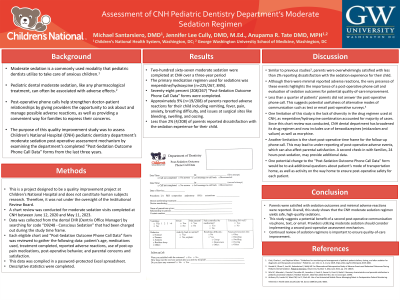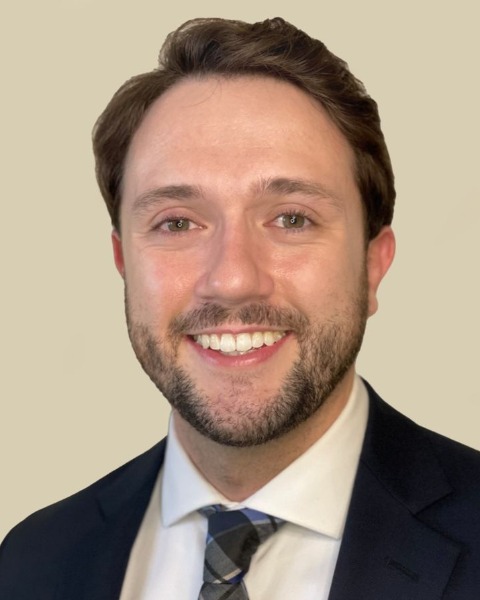Sedation
275 - Assessment of CNH Pediatric Dentistry Department's Moderate Sedation Regimen


Michael Santarsiero, Jr., DMD (he/him/his)
Pediatric Dental Resident
Children's National Hospital, Washington, D.C.
Children's National Hospital
Washington, District of Columbia, United States- JC
Jennifer Cully, DMD, M.Ed.
Children's National Medical Center
- AT
Anupama Tate, DMD, MPH
Children's National Medical Center
- JC
Jennifer Cully, DMD, MEd
Children's National Hospital
Washington, District of Columbia, United States - MC
Mudrika Chhabra, BDS, DMD, MSD
Program Director
Childrens National Medical Center, Washington DC
Washington, District of Columbia, United States
Presenting Author(s)
Co-Author(s)
Research Mentor(s)
Program Director(s)
Purpose: The aim of this quality improvement study was to assess Children’s National Hospital (CNH) pediatric dentistry department’s moderate sedation post-operative assessment mechanism by examining the department’s completed “Post-Sedation Outcome Phone Call Data” forms from the last three years.
Methods: A chart review of moderate sedation visits from June 12, 2020, to May 11, 2023, was conducted. Patient data, including age, medications, treatment details, adverse reactions, post-op pain medication use, post-operative behavior, and parental concerns and satisfaction, was extracted from individual charts and compiled in a password-protected Excel spreadsheet. Descriptive statistics were completed.
Results: Two-hundred sixty-seven moderate sedations were completed at CNH over a three-year period. The primary medication regimen used for sedations was meperidine/hydroxyzine, accounting for 225 cases (84%). Only 42 of 267 sedations (16%) utilized a different medication regimen. There were 208 completed “Post-Sedation Outcome Phone Call Data” forms. Only about 9% (19/208) reported adverse reactions including vomiting, fever, pain, anxiety, breathing difficulty, and issues at surgical sites like bleeding, swelling, and oozing; however, these were not common occurrences. Parents were overwhelmingly satisfied with less than 2% (4/208) reporting dissatisfaction with the sedation experience for their child.
Conclusions: Parents were satisfied with sedation outcomes and minimal adverse reactions were reported. This study highlights the potential benefit of a second post-operative phone call. CNMC dental clinic should consider implementing a second post-operative phone call to their post-operative assessment mechanism.
Identify Supporting Agency and Grant Number:

.jpg)